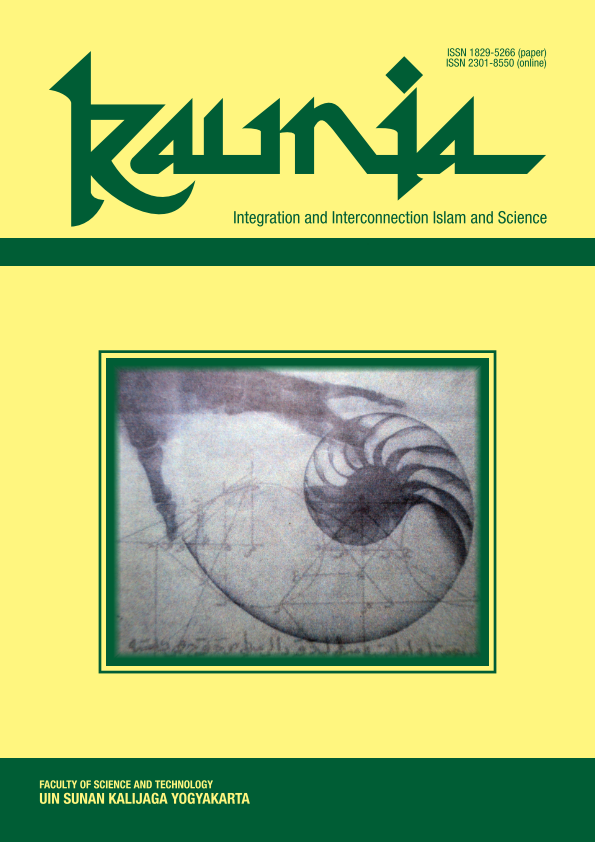Study of Dzarrah: Analysis of Wave Functions Potential Non Central Coulombic Rosen Morse
DOI:
https://doi.org/10.14421/kaunia.1411Keywords:
non central Coulombic Rosen Morse, dzarrahAbstract
It has been obtained a graph of the wave function of Coulombic's non-central potential Schrodinger equation Rosen Morse which is systematically an embodiment of hydrogen atoms and their isotopes. Schrodinger's equation is solved through variable spatial techniques with each variable resolved using a different method so that the radial and angular part wave functions are visualized by Matlab-based computer programming. Visualization of the radial wave function that is formed describes the probability value of the discovery of electrons which are small parts of an atom, while the visualization of the formed angular wave function shows the movement of electrons in an energy level. The mention of the atom itself is already in the Qur'an, Allah says in surah As-Saba verse 3. According to the interpretation of Quraish Shihab the word dzarrah in Arabic refers to a very small object, the size of an ant's child or fine dust. The phrase mitsqalu dzarrah in this verse means the weight of an atom. This implies the presence of a compound whose specific gravity is lighter than an atom.
References
Berkdemir, C. (2012). Aplication of the Nikiforov-Uvarov Method in Quantum Mechanics. Theoretical Concept of Quantum Mechanics.
Ghoffar, M.A., Mu’thi, A., & Al-Atsari, A. I. (2004). Tafsir Ibnu Katsir. Yogyakarta: Niaga Swadaya.
Jasso, C .B. C., & Kirchbach, M. (2006). The Trigonometric Rosen-Morse Potential as a Prime Candidate for an Effective QCD Potential, 3(6), 275-278.
Anonim, (2004). Al-Qur’an dan Terjemahannya. Jakarta: Departemen Agama RI.
Yanuarief, C., Suparmi, & Cari. (2012). Analisis Energi dan Fungsi Gelombang Potensial Non Sentral Coulombic Rosen Morse Menggunakan Polinomial Romanovski.
Downloads
Published
How to Cite
Issue
Section
License
All articles published in Kaunia are licensed under a Creative Commons Attribution-NonCommercial-ShareAlike 4.0 International license, with the copyright to these articles held by the journal. Anyone is free to read, download, copy, distribute, print, search, link to full text articles, or transform an article, in any medium or format, provided they do so non-commercially, give appropriate credit to Kaunia, and distribute any derivative work under the same (or equivalent) terms.
By submitting to Kaunia, authors agree to both the terms of the CC BY-NC-SA license and the automatic transfer of the copyright to their article if it is accepted.









